
Published: Dec 2, 2024
How Does Influencer Marketing Work? A Beginner's Guide
How Does Influencer Marketing Work? A Beginner’s Guide
I’ve been in the trenches of digital marketing for years, and let me tell you, influencer marketing is the hottest thing since sliced bread… or should I say, since avocado toast? It’s a wild ride that can make your brand go viral faster than you can say “TikTok challenge.” So, buckle up, buttercup – we’re about to dive into the world of likes, follows, and #sponsored content!
TLDR: What exactly is influencer marketing and how can it benefit my business?
1️⃣ What is influencer marketing?
Influencer marketing is a collaboration between brands and social media personalities with large followings. These influencers promote products or services to their audience, leveraging their trust and credibility to drive engagement and sales for the brand.
2️⃣ How do businesses benefit from influencer marketing?
Businesses can tap into new audiences, boost brand awareness, and increase credibility through influencer partnerships. It’s often more cost-effective than traditional advertising and can lead to higher conversion rates due to the trust influencers have built with their followers.
3️⃣ What types of influencers are there?
Influencers come in various sizes: mega-influencers (1M+ followers), macro-influencers (100K-1M followers), micro-influencers (10K-100K followers), and nano-influencers (1K-10K followers). Each type has its pros and cons, depending on your campaign goals and budget.
Table of Contents
- The Basics of Influencer Marketing
- Creating an Influencer Marketing Strategy
- Measuring the Success of Your Influencer Campaigns
- Legal Considerations and Best Practices
- The Future of Influencer Marketing
- The Rise of Micro and Nano-Influencers
- AI and Influencer Marketing: A Match Made in Digital Heaven
- Virtual Influencers: The New Kids on the Block
- Long-Term Partnerships Over One-Off Deals
- The Rise of Influencer-Led Brands
- Authenticity and Social Responsibility
- New Platforms, New Opportunities
- Measuring What Matters
- Finding the Right Influencers for Your Brand
- Types of Influencer Partnerships
- Sponsored Posts: The Bread and Butter
- Brand Ambassadorships: The Long Game
- Affiliate Marketing: Performance-Based Partnerships
- Product Reviews: The Trust Builders
- Co-Created Products: The Ultimate Collab
- Takeovers: A Day in the Life
- Event Partnerships: Creating IRL Buzz
- Contests and Giveaways: Engagement Boosters
The Basics of Influencer Marketing
Let’s kick things off with a quick rundown of what influencer marketing is all about. Picture this: you’re scrolling through Instagram, and suddenly you see your favorite fitness guru raving about a new protein shake. That’s influencer marketing in action, my friends!
What is Influencer Marketing?
Influencer marketing is when brands team up with popular social media personalities to promote their products or services. It’s like word-of-mouth advertising on steroids. These influencers have built up a loyal following who trust their opinions, making them the perfect middlemen between brands and potential customers.
Why Has It Blown Up?
Trust Factor
 People trust recommendations from individuals more than they trust traditional ads. It’s like getting a tip from a friend rather than a salesperson.
People trust recommendations from individuals more than they trust traditional ads. It’s like getting a tip from a friend rather than a salesperson.Targeted Reach
 Influencers often have niche audiences, allowing brands to reach specific demographics more effectively.
Influencers often have niche audiences, allowing brands to reach specific demographics more effectively.Social Proof When an influencer uses a product, it’s like a stamp of approval for their followers.
Content Creation
 Influencers are content creation machines, saving brands time and resources.
Influencers are content creation machines, saving brands time and resources.
Types of Influencers
Not all influencers are created equal. Here’s a quick breakdown:
Mega-Influencers
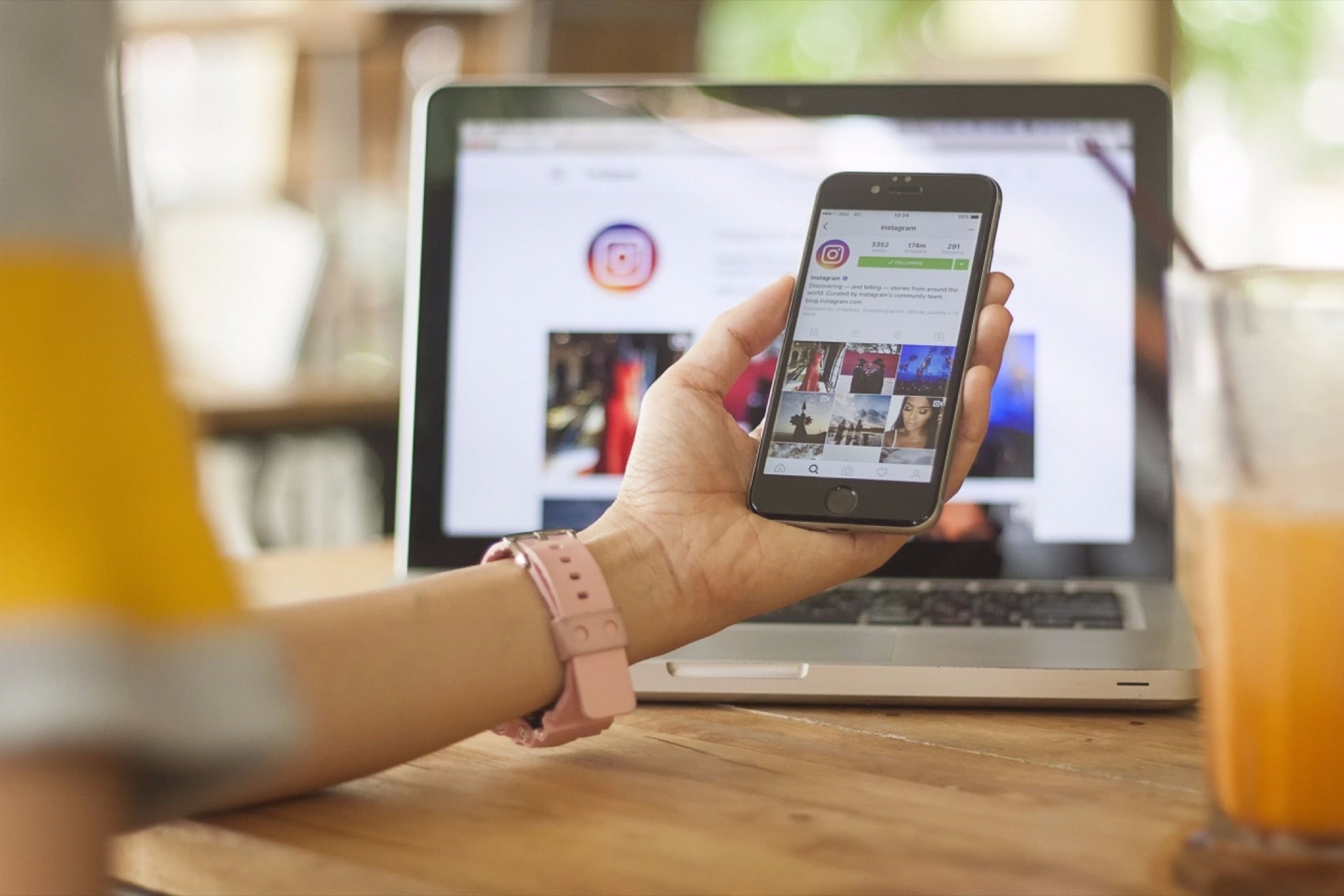 These are your A-list celebrities with millions of followers. Think Kim Kardashian or Cristiano Ronaldo.
These are your A-list celebrities with millions of followers. Think Kim Kardashian or Cristiano Ronaldo.Macro-Influencers
 Usually have between 100K-1M followers. Often industry experts or B-list celebrities.
Usually have between 100K-1M followers. Often industry experts or B-list celebrities.Micro-Influencers Typically have 10K-100K followers. They often have higher engagement rates and more niche audiences.
Nano-Influencers The new kids on the block with 1K-10K followers. They may have small audiences, but their followers are usually highly engaged.
How Does It Work?
Brand-Influencer Match: Brands identify influencers whose audience aligns with their target market.
Collaboration Agreement
 They hash out the details - what content will be created, how many posts, payment terms, etc.
They hash out the details - what content will be created, how many posts, payment terms, etc.Content Creation: The influencer creates content featuring the brand’s product or service.
Posting and Engagement
 The content goes live, and the influencer engages with their audience about it.
The content goes live, and the influencer engages with their audience about it.Tracking and Analysis
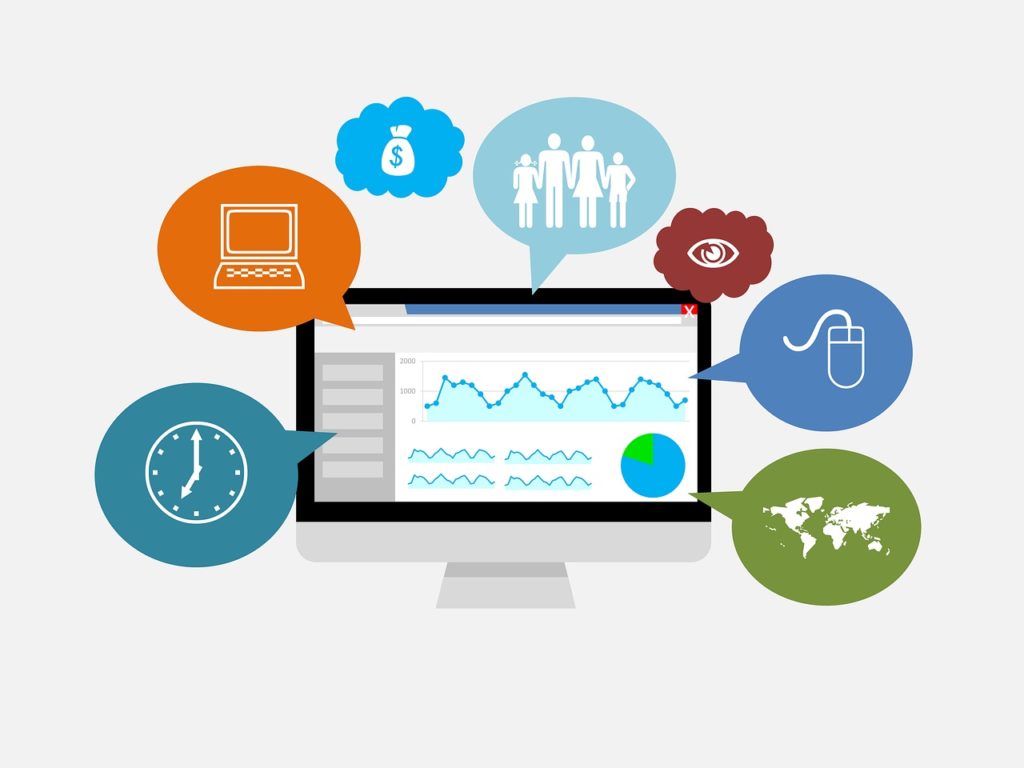 Brands monitor the performance of the campaign using various metrics.
Brands monitor the performance of the campaign using various metrics.
Real-World Success Stories
Let’s look at some killer campaigns that knocked it out of the park:
Daniel Wellington
 This watch brand built its empire on Instagram influencer marketing. They sent free watches to micro-influencers and offered unique discount codes. The result? They grew from a $15,000 startup to a $220 million company in just four years.
This watch brand built its empire on Instagram influencer marketing. They sent free watches to micro-influencers and offered unique discount codes. The result? They grew from a $15,000 startup to a $220 million company in just four years.Glossier
 This beauty brand turned its own customers into influencers. They created a community of “Glossier Girls” who shared their experiences with the products. This strategy helped Glossier become a billion-dollar company.
This beauty brand turned its own customers into influencers. They created a community of “Glossier Girls” who shared their experiences with the products. This strategy helped Glossier become a billion-dollar company.Dunkin’ Donuts
 They partnered with nano-influencers on TikTok for their “Menu Hacks” campaign. The campaign generated over 14 million views and significantly increased engagement with younger audiences.
They partnered with nano-influencers on TikTok for their “Menu Hacks” campaign. The campaign generated over 14 million views and significantly increased engagement with younger audiences.
Is It Right for Your Brand?
Influencer marketing can be a game-changer, but it’s not a one-size-fits-all solution. It works best for brands that:
- Have a strong social media presence
- Want to reach younger demographics
- Have visually appealing products or services
- Are looking to build trust and credibility
Remember, authenticity is key in influencer marketing. The most successful campaigns feel natural and genuine, not forced or overly salesy. So, if you’re thinking about diving into the influencer marketing pool, make sure you’re ready to make a splash!
Creating an Influencer Marketing Strategy
Alright, let’s dive into creating a killer influencer marketing strategy that’ll make your brand the talk of the town! I’ve helped dozens of companies nail their influencer campaigns, and I’m gonna share the secret sauce with you.
Set Clear Goals
First things first, you gotta know what you’re aiming for. Are you trying to boost brand awareness? Drive sales? Launch a new product? Here’s a quick breakdown:
- Brand Awareness: Perfect if you’re the new kid on the block or entering a new market.
- Lead Generation: Great for B2B companies or those with longer sales cycles.
- Sales Boost: Ideal for e-commerce brands or those with direct-to-consumer products.
- Social Proof Build credibility and trust through influencer endorsements.
Know Your Audience
You can’t hit a target you can’t see, right? Dig deep into your audience demographics. Use tools like Google Analytics or social media insights to understand:
- Age range
- Location
- Interests
- Preferred social platforms
For example, if you’re selling trendy sneakers, you might be targeting 18-25 year-olds who are into streetwear and spend hours on TikTok and Instagram.
Choose the Right Influencers
Now, this is where the magic happens. You want influencers who align with your brand values and have an engaged audience that matches your target demographic. Consider:
- Follower Count: Bigger isn’t always better. Micro-influencers often have higher engagement rates.
- Engagement Rate: Look for influencers with active, commenting followers.
- Content Quality: Their posts should be well-produced and align with your brand aesthetic.
- Authenticity: Genuine influencers who truly love your product will create more impactful content.
Develop a Content Strategy
Work with your influencers to create content that feels natural and engaging. Some popular formats include:
- Product Reviews In-depth looks at your product’s features and benefits.
- How-To Videos: Tutorials showcasing your product in action.
- Behind-the-Scenes Content: Gives followers an exclusive peek into your brand.
- Contests or Giveaways: Boost engagement and grow your follower base.
Set a Budget
Influencer fees can vary wildly. I’ve seen deals range from $100 for a nano-influencer post to $1 million for a celebrity endorsement. Some factors to consider:
- Influencer tier (nano, micro, macro, celebrity)
- Platform (Instagram typically costs more than Twitter)
- Content type (video content usually costs more than static posts)
- Campaign length
Pro tip: Don’t blow your entire budget on one big influencer. Diversifying with a mix of micro and macro influencers often yields better results.
Track and Measure Results
You can’t improve what you don’t measure. Use these metrics to gauge your campaign’s success:
- Engagement Rate: Likes, comments, shares
- Reach and Impressions: How many people saw your content
- Click-Through Rate (CTR) Especially important for driving traffic to your website
- Conversions: Sales, sign-ups, or whatever action you’re aiming for
- Return on Investment (ROI)
 Compare your spend to the results
Compare your spend to the results
Tools like Hootsuite or Sprout Social can help you track these metrics across platforms.
Nurture Influencer Relationships
Don’t treat influencers like a one-night stand. Build long-term relationships for authentic, ongoing promotion. Some tips:
- Offer exclusive perks or early access to new products
- Engage with their content regularly
- Consider long-term ambassador programs
I once worked with a skincare brand that turned a one-off collab with a beauty influencer into a year-long partnership. The influencer became the face of their new product line, and sales skyrocketed!
Stay Compliant
Don’t forget the legal stuff! The Federal Trade Commission (FTC) requires influencers to disclose paid partnerships. Make sure your influencers use hashtags like #ad or #sponsored.
Creating a solid influencer marketing strategy takes time and effort, but the payoff can be huge. Remember, it’s all about authenticity, relevance, and mutual benefit. Now go out there and make some influencer magic happen!
Measuring the Success of Your Influencer Campaigns
Alright, let’s talk numbers! Measuring the success of your influencer campaigns is like being a detective - you’ve gotta follow the clues to see if you’ve struck gold or if you’re back to the drawing board. I’ve run dozens of these campaigns, and trust me, the data tells a story if you know how to read it.
Key Performance Indicators (KPIs)
First things first, you need to know what to measure. Here are the big ones:
Engagement Rate
 This is the bread and butter of influencer marketing. It’s all about likes, comments, shares, and saves. A high engagement rate means the content is resonating with the audience.
This is the bread and butter of influencer marketing. It’s all about likes, comments, shares, and saves. A high engagement rate means the content is resonating with the audience.Reach and Impressions
 How many eyeballs are seeing your content? Reach tells you unique viewers, while impressions count total views, including repeats.
How many eyeballs are seeing your content? Reach tells you unique viewers, while impressions count total views, including repeats.Click-Through Rate (CTR)
 If you’re trying to drive traffic to your site, this is crucial. It shows how many people actually clicked that link in the bio.
If you’re trying to drive traffic to your site, this is crucial. It shows how many people actually clicked that link in the bio.Conversions
-details.jpg) The holy grail of marketing - are people buying your stuff or signing up for your service?
The holy grail of marketing - are people buying your stuff or signing up for your service?Brand Sentiment This one’s a bit trickier to measure, but it’s about how people feel about your brand after seeing the influencer content.
Tools of the Trade
You don’t have to count likes manually (thank goodness!). Here are some tools that’ll make your life easier:
Google Analytics
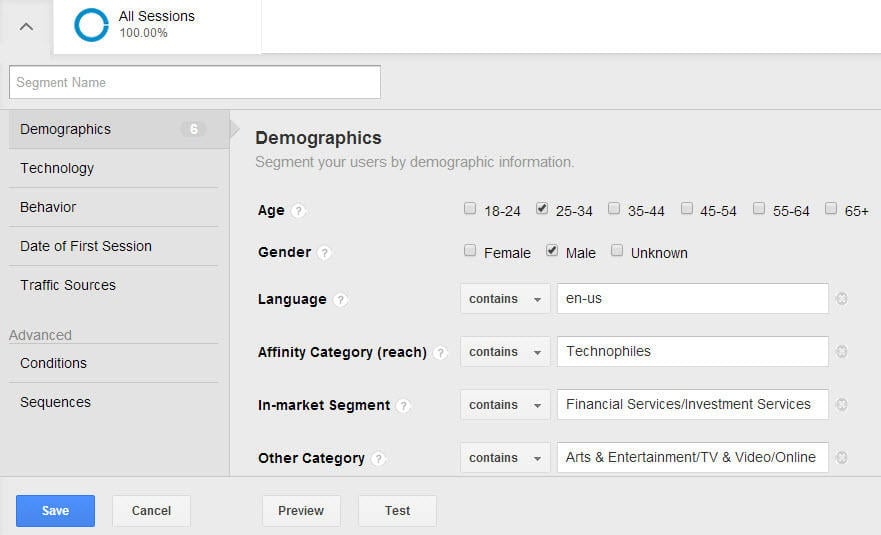 Great for tracking website traffic and conversions from influencer campaigns.
Great for tracking website traffic and conversions from influencer campaigns.Hootsuite or Sprout Social These social media management tools offer robust analytics for tracking engagement across platforms.
Mention
 Helps track brand mentions and sentiment across social media and the web.
Helps track brand mentions and sentiment across social media and the web.
Tracking Methods
Now, let’s get into the nitty-gritty of how to actually track these metrics:
UTM Parameters These are little bits of code you add to URLs to track where traffic is coming from. For example, you might use “utm_source=instagram&utm_medium=influencer&utm_campaign=summersale” to track clicks from a specific Instagram influencer during your summer sale.
Unique Promo Codes Give each influencer a unique discount code. This not only incentivizes their followers to buy but also lets you track which influencers are driving the most sales.
Pixel Tracking If you’re running ads through the influencer, platforms like Facebook and Instagram offer pixel tracking to measure conversions.
Hashtag Tracking Create a unique hashtag for your campaign and track its usage. Tools like Keyhole can help with this.
Benchmarking Success
So, you’ve got all this data - but what does it mean? Here’s how to benchmark your success:
Industry Standards Compare your engagement rates to industry averages. For example, on Instagram, a good engagement rate is typically between 1% to 5%, depending on the influencer’s follower count.
Past Performance Compare your current campaign to past ones. Are you seeing improvement?
Competitor Analysis Keep an eye on what your competitors are doing. Are their influencer campaigns outperforming yours?
Case Study: The Power of Micro-Influencers
I once worked with a small athleisure brand that decided to partner with 10 micro-influencers instead of one big-name celebrity. We gave each influencer a unique promo code and trackable link. The results?
- Average engagement rate: 8.5% (well above the industry standard)
- CTR: 3.2%
- Conversion rate: 2.1%
The campaign cost a fraction of what a celebrity endorsement would have, but it delivered a whopping 350% ROI. The key was the authenticity of the micro-influencers and their highly engaged niche audiences.
When Things Don’t Go As Planned
Sometimes, campaigns flop. It happens to the best of us. If your numbers aren’t where you want them to be, don’t panic. Use it as a learning opportunity:
- Was the influencer a good fit for your brand?
- Did the content feel authentic?
- Was your offer compelling enough?
- Did you promote the campaign on your own channels?
Remember, influencer marketing is as much an art as it is a science. It takes practice to get it right.
Measuring the success of your influencer campaigns isn’t just about crunching numbers - it’s about understanding the story those numbers tell. With the right tools and metrics, you can turn data into actionable insights that’ll supercharge your next campaign. Now get out there and start measuring!
Legal Considerations and Best Practices
Let’s talk about keeping your influencer campaigns on the up-and-up. Trust me, I’ve seen brands get into hot water for not following the rules, and it’s not pretty. So, let’s dive into the legal stuff and best practices that’ll keep you out of trouble and your campaigns running smoothly.
Disclosure is Key
The Federal Trade Commission (FTC) isn’t messing around when it comes to influencer marketing. They want consumers to know when they’re seeing paid content. Here’s what you need to know:
Clear and Conspicuous Disclosure Influencers must clearly state when a post is sponsored. No hiding it in a sea of hashtags!
Platform-Specific Tools Platforms like Instagram and YouTube have built-in disclosure tools. Use them!
Language Matters “Ad,” “Sponsored,” or “Paid Partnership” work. “Thank you [Brand]” doesn’t cut it.
Visibility Disclosures should be visible without clicking “more” or expanding the post.
Contracts Are Your Friend
Don’t skimp on the paperwork. A solid contract protects both you and the influencer. Make sure it covers:
- Scope of work (number of posts, content type, etc.)
- Payment terms
- Content approval process
- Exclusivity clauses (if any)
- Disclosure requirements
- Intellectual property rights
I once worked with a brand that forgot to include an exclusivity clause. Next thing we knew, their influencer was promoting a competitor’s product a week later. Don’t make the same mistake!
Authenticity is Non-Negotiable
The FTC also requires that influencer endorsements be truthful and not misleading. This means:
- Influencers should actually use your product
- Their opinions should be genuine
- Results claims need to be typical or clearly stated as exceptional
Content Approval Process
Set up a clear content approval process to ensure influencer posts align with your brand and legal requirements. But remember, too much control can make the content feel inauthentic.
Platform-Specific Guidelines
Each social media platform has its own rules for sponsored content. For example:
- Instagram requires the “Paid partnership with” tag for sponsored posts
- YouTube needs disclosures in the video and description
- TikTok has a branded content toggle
Make sure you and your influencers are familiar with these guidelines.
International Considerations
If you’re running global campaigns, remember that different countries have different rules. The UK’s Advertising Standards Authority (ASA), for instance, has its own guidelines for influencer marketing.
Data Privacy
With regulations like GDPR in Europe and CCPA in California, data privacy is crucial. Be clear about how you’ll use any data collected through influencer campaigns.
Best Practices for Smooth Sailing
Educate Your Influencers Don’t assume they know all the rules. Provide clear guidelines on disclosures and content expectations.
Keep Records Document all agreements, approvals, and campaign results. You never know when you might need them.
Monitor Campaigns Closely Regularly check that influencers are following guidelines. Address any issues promptly.
Be Transparent with Your Audience Honesty builds trust. Don’t try to hide the fact that you’re working with influencers.
Stay Updated on Regulations The rules of influencer marketing are always evolving. Make it someone’s job to stay on top of changes.
When Things Go Wrong
Even with the best planning, things can go sideways. Here’s what to do:
Act Fast If an influencer posts something inappropriate or misleading, address it immediately.
Be Honest If you make a mistake, own up to it. Transparency goes a long way with consumers.
Learn and Adapt Use any missteps as learning opportunities to improve your processes.
Remember, following these legal considerations and best practices isn’t just about avoiding trouble - it’s about building trust with your audience. When done right, influencer marketing can be a powerful tool that benefits your brand, the influencer, and the consumer. Now go out there and create some awesome, legally-sound campaigns!
The Future of Influencer Marketing
Buckle up, folks! The world of influencer marketing is evolving faster than you can say “TikTok dance challenge.” As someone who’s been in the trenches of digital marketing for years, I’ve seen trends come and go. But let me tell you, the future of influencer marketing is looking pretty darn exciting. Let’s dive into what’s coming down the pike.
The Rise of Micro and Nano-Influencers
Gone are the days when brands only cared about partnering with mega-stars. The future is all about the little guys:
(10K-100K followers): These folks are like the cool kids in high school - they’ve got a tight-knit group of followers who hang on their every word.
(1K-10K followers): Think of them as the neighborhood gossip, but in a good way. They’ve got serious street cred with their small but mighty audience.
Why the shift? It’s all about engagement, baby. These smaller influencers often have off-the-charts engagement rates. I once worked with a nano-influencer in the crafting niche who had a whopping 8% engagement rate. That’s gold in the influencer world!
AI and Influencer Marketing: A Match Made in Digital Heaven
Artificial Intelligence is stepping into the influencer game, and it’s changing everything:
Influencer Discovery: AI tools can now analyze millions of profiles to find the perfect match for your brand. No more scrolling through Instagram for hours!
Performance Prediction: Some AI tools can predict how well an influencer’s post will perform before it even goes live. It’s like having a crystal ball for your campaigns.
Fake Follower Detection: AI is getting scary good at spotting those pesky fake followers. No more wasting money on influencers with inflated numbers.
Virtual Influencers: The New Kids on the Block
Get ready for this mind-bender:virtual influencers are taking over. These computer-generated characters are racking up followers and brand deals left and right.
Lil Miquela
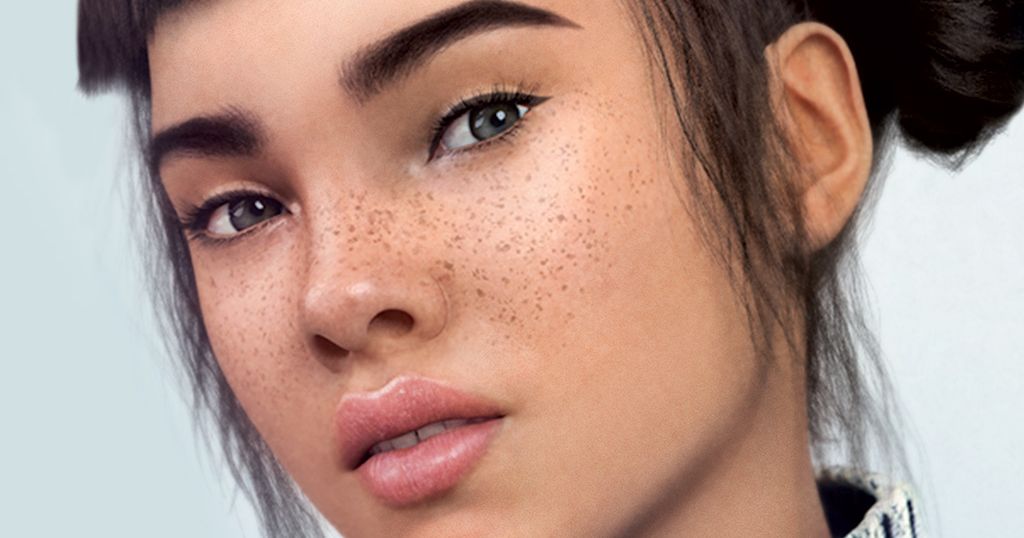 This virtual It Girl has over 3 million Instagram followers and has worked with brands like Calvin Klein and Prada.
This virtual It Girl has over 3 million Instagram followers and has worked with brands like Calvin Klein and Prada.Lu do Magalu
 A virtual influencer from Brazil with a whopping 25 million followers on Facebook.
A virtual influencer from Brazil with a whopping 25 million followers on Facebook.
The pros? They’re always on brand, never have a bad hair day, and don’t come with the drama of human influencers. The cons? Some consumers find them a bit… well, creepy.
Long-Term Partnerships Over One-Off Deals
The future of influencer marketing is all about building lasting relationships. Brands are moving away from one-off sponsored posts and towards long-term ambassadorships.
For example, Gymshark has built its entire brand on long-term influencer partnerships. They’ve created a community of athletes and fitness enthusiasts who genuinely love the brand. The result? A cult-like following and explosive growth.
The Rise of Influencer-Led Brands
We’re seeing more influencers launching their own products and brands. It’s not just about promoting other people’s stuff anymore:
Kylie Cosmetics Love her or hate her, Kylie Jenner turned her influence into a billion-dollar beauty empire.
Good American
 Khloé Kardashian’s inclusive denim brand that’s shaking up the fashion industry.
Khloé Kardashian’s inclusive denim brand that’s shaking up the fashion industry.
This trend blurs the lines between influencer and entrepreneur, creating new opportunities (and challenges) for brands looking to partner with these influencers-turned-business-owners.
Authenticity and Social Responsibility
The future of influencer marketing is getting real, folks. Consumers are demanding authenticity and social responsibility:
Unfiltered Content: Say goodbye to perfectly polished posts. Raw, unedited content is gaining traction.
Social Causes: Influencers are using their platforms to speak out on social issues. Brands that align with these causes can create powerful partnerships.
Transparency: Influencers are getting more open about their sponsored content, going beyond the basic #ad disclosure.
New Platforms, New Opportunities
While Instagram and YouTube still reign supreme, new platforms are shaking things up:
TikTok
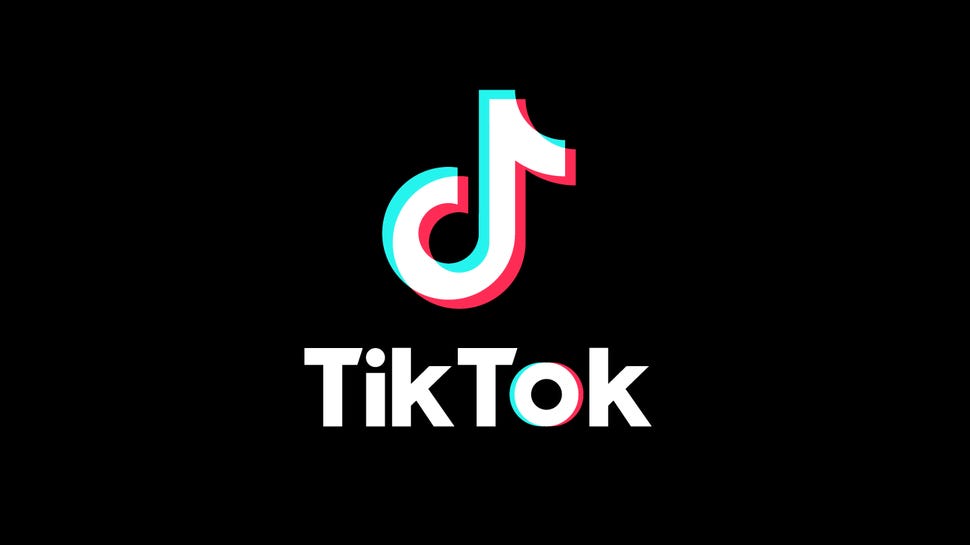 This short-form video app has exploded in popularity, especially among Gen Z. Its algorithm makes it easier for content to go viral, creating overnight sensations.
This short-form video app has exploded in popularity, especially among Gen Z. Its algorithm makes it easier for content to go viral, creating overnight sensations.Twitch
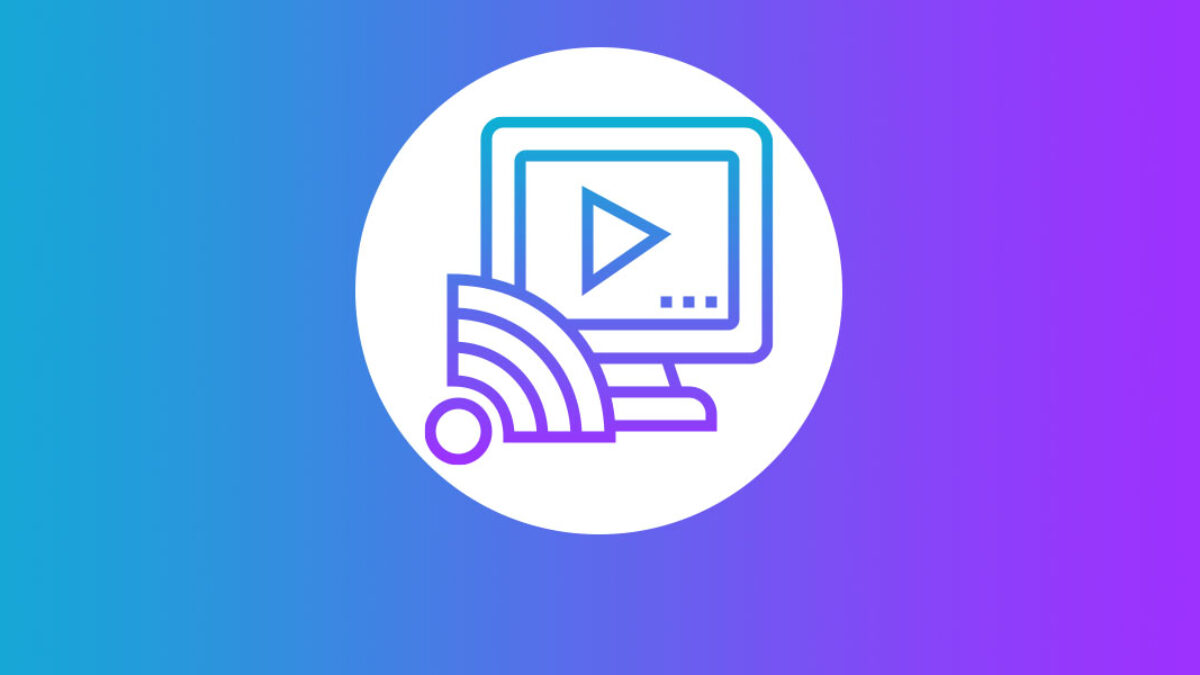 Not just for gamers anymore. Brands are partnering with Twitch streamers to reach engaged, niche audiences.
Not just for gamers anymore. Brands are partnering with Twitch streamers to reach engaged, niche audiences.Clubhouse
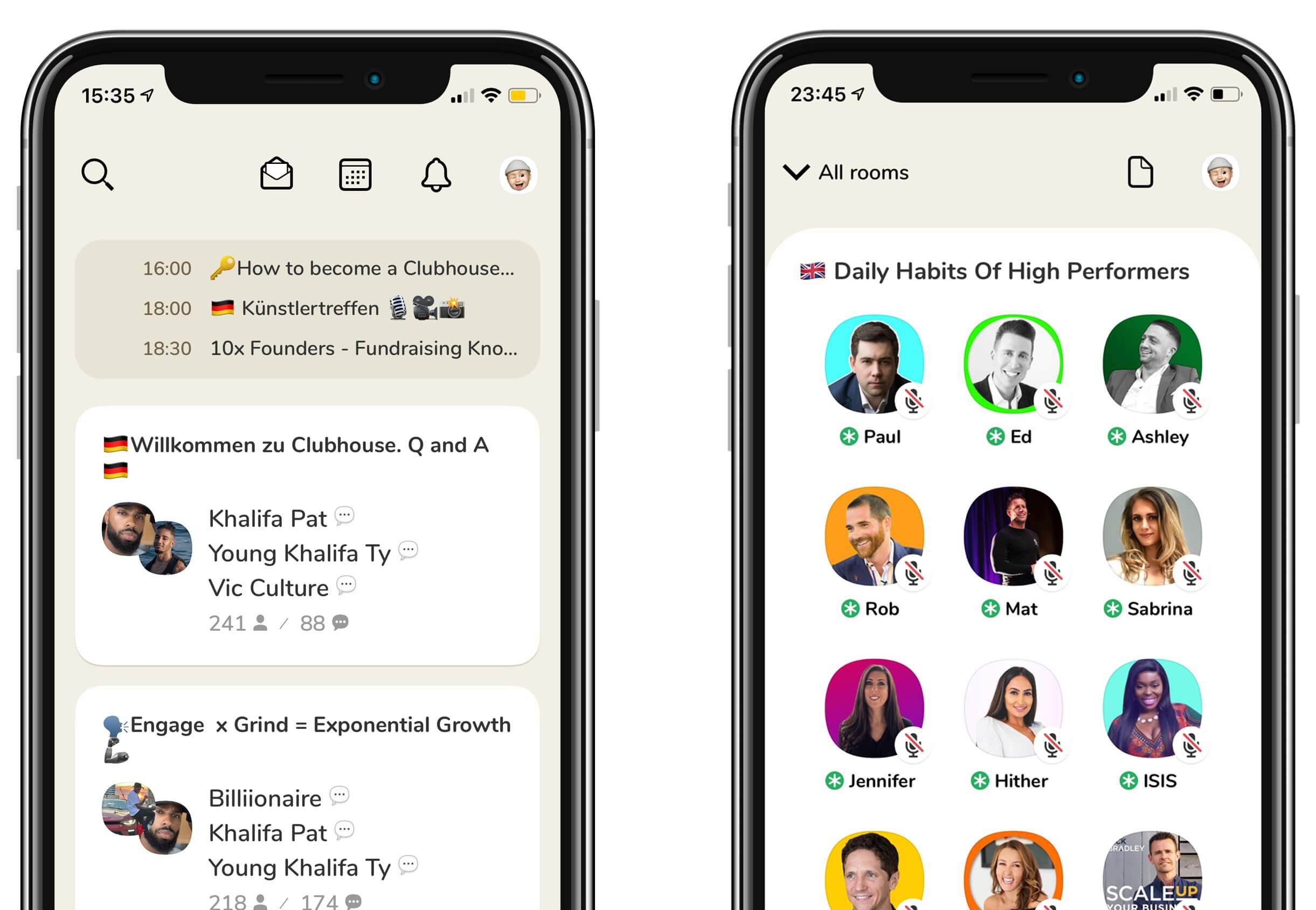 This audio-only app is creating new opportunities for thought leadership and intimate conversations with audiences.
This audio-only app is creating new opportunities for thought leadership and intimate conversations with audiences.
The key? Be ready to pivot and experiment with new platforms as they emerge.
Measuring What Matters
The future of influencer marketing is all about sophisticated metrics. We’re moving beyond likes and followers to more meaningful measures:
Conversion Tracking: Advanced pixel tracking and unique URLs are making it easier to attribute sales directly to influencer efforts.
Brand Lift Studies: Measuring the impact of influencer campaigns on brand awareness and perception.
Audience Quality: Tools that analyze the quality and relevance of an influencer’s audience, not just the quantity.
Remember, folks, the world of influencer marketing is always changing. The key to success? Stay curious, be willing to experiment, and always, always keep it real. The future’s bright for those who can adapt and ride the wave of these exciting trends. Now go out there and make some influencer magic happen!
Finding the Right Influencers for Your Brand
Alright, let’s dive into the nitty-gritty of finding those perfect influencers who’ll make your brand shine! I’ve been in this game for years, and let me tell you, it’s both an art and a science.
Know Your Audience Inside Out
Before you even think about reaching out to influencers, you need to know your audience like the back of your hand. I’m talking demographics, psychographics, the whole shebang.
Google Analytics Use this to dig into your website visitors’ age, location, interests, and behaviors.
Social Media Insights Each platform has its own analytics tool. Facebook’s Audience Insights is a goldmine for understanding your followers.
Customer Surveys Don’t be shy - ask your customers directly what they like and who they follow.
Define Your Goals
What are you trying to achieve with your influencer campaign? Are you:
- Boosting brand awareness?
- Driving sales of a specific product?
- Increasing engagement on your social channels?
Your goals will dictate the type of influencers you should be looking for.
Choose the Right Platforms
Where does your audience hang out online? Different platforms attract different demographics:
- Instagram Great for visual products and younger audiences.
- YouTube Perfect for in-depth product reviews and tutorials.
- TikTok
 The go-to for reaching Gen Z.
The go-to for reaching Gen Z. - LinkedIn Ideal for B2B influencer marketing.
Tools of the Trade
Finding influencers manually is like looking for a needle in a haystack. Here are some tools that’ll make your life easier:
HypeAuditor
 Great for Instagram and YouTube influencer discovery and analytics.
Great for Instagram and YouTube influencer discovery and analytics.BuzzSumo
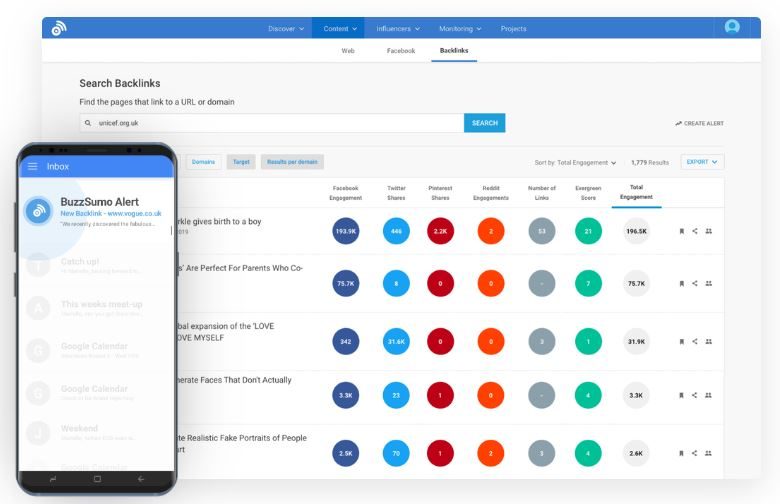 Helps you find influencers based on content topics.
Helps you find influencers based on content topics.Upfluence A comprehensive platform for finding, managing, and analyzing influencer campaigns.
Look Beyond the Numbers
Don’t get starry-eyed over follower counts. Here’s what really matters:
Engagement Rate This is the holy grail. An influencer with 10,000 highly engaged followers can be more valuable than one with 100,000 passive followers.
Content Quality Does their content align with your brand aesthetics and values?
Audience Demographics Make sure their followers match your target audience.
Authenticity Look for influencers who genuinely engage with their audience and aren’t just pushing products 24/7.
Micro vs. Macro Influencers
Here’s a little secret: sometimes, smaller is better.
(10K-100K followers) Often have higher engagement rates and more niche audiences.
(100K-1M followers) Offer broader reach but can be pricier and less engaged.
I once worked with a skincare brand that saw a 200% ROI from a campaign with micro-influencers in the clean beauty niche. Their engaged followers trusted their recommendations, leading to a surge in sales.
Vet Your Potential Influencers
Before you reach out, do your homework:
Check Their Past Partnerships Have they worked with your competitors? How did those campaigns perform?
Analyze Their Content Is it mostly organic or filled with sponsored posts?
Read the Comments Are their followers genuinely engaged or just dropping emoji comments?
Look for Red Flags Sudden spikes in followers or engagement could indicate bought followers or engagement pods.
Reach Out the Right Way
Once you’ve found your perfect match, it’s time to slide into those DMs (or emails, preferably):
Personalize Your Approach Show you’ve done your research and genuinely appreciate their content.
Be Clear About Expectations What do you want from them? How much are you willing to pay?
Offer Value What’s in it for them beyond monetary compensation?
Be Professional Remember, this is a business relationship, even if it feels casual.
Case Study: The Power of the Right Match
Let me tell you about a campaign I ran for a sustainable fashion brand. We partnered with Leah Thomas, an environmental activist and micro-influencer with about 200K followers at the time.
Why her? Her audience was deeply committed to sustainability, aligning perfectly with our brand values. The campaign resulted in a 150% increase in website traffic and a 75% boost in sales of our eco-friendly line.
The key was the authenticity of the partnership. Leah genuinely loved the products and her followers trusted her recommendation.
Remember, finding the right influencers is about quality over quantity. It’s about finding that perfect match who can authentically represent your brand and connect with your target audience. Now go out there and find your brand’s perfect influencer match!
Types of Influencer Partnerships
Alright, let’s dive into the juicy stuff - the different types of influencer partnerships you can leverage to skyrocket your brand. I’ve seen brands hit it out of the park and others fall flat on their face, so buckle up for some real talk and insider tips.
Sponsored Posts: The Bread and Butter
Sponsored posts are the OG of influencer marketing. Here’s the lowdown:
- What it is: Influencers create content featuring your product or service, usually with a disclosure like #ad or #sponsored.
- Best for: Quick brand awareness boosts or product launches.
- Example: Fashion Nova’s partnership with Cardi B. Her sponsored posts featuring their clothing line regularly rack up millions of likes on Instagram.
Pro tip: Don’t just hand over your product and hope for the best. Work with the influencer to create content that feels authentic to their feed. I once saw a tech brand force a beauty influencer to post about their new laptop - it stuck out like a sore thumb and the engagement was abysmal.
Brand Ambassadorships: The Long Game
Think of brand ambassadors as your influencer dream team.
- What it is: Long-term partnerships where influencers regularly promote your brand.
- Best for: Building brand loyalty and consistent exposure.
- Example:Gymshark’s athlete program. They’ve built a community of fitness influencers who consistently rep their gear, creating a cult-like following.
I worked with a small skincare brand that turned a micro-influencer into their brand ambassador. Over six months, her genuine love for the products and consistent content led to a 300% increase in the brand’s Instagram following and a 150% boost in sales.
Affiliate Marketing: Performance-Based Partnerships
Affiliate marketing is all about that sweet, sweet ROI.
- What it is: Influencers earn a commission on sales they generate through unique links or codes.
- Best for: Driving direct sales and measuring ROI.
- Example: Amazon’s Associate program. Influencers like Marques Brownlee often include affiliate links to products they review.
Pro tip: Make sure your affiliate program is easy to use. I’ve seen brands lose out on partnerships because their system was too complicated.
Product Reviews: The Trust Builders
Honest product reviews can be worth their weight in gold.
- What it is: Influencers test and review your product, sharing their honest opinion.
- Best for: Building credibility and showcasing product features.
- Example: Tech YouTuber MKBHD’s in-depth smartphone reviews.
Remember, authenticity is key here. Don’t try to control the narrative too much. I once saw a brand ask for changes to a lukewarm review - it backfired spectacularly when the influencer called them out publicly.
Co-Created Products: The Ultimate Collab
This is where things get really exciting.
- What it is: Partnering with an influencer to create a unique product.
- Best for: Tapping into the influencer’s audience and creating buzz.
- Example:MAC Cosmetics frequently collaborates with celebrities and influencers on limited edition makeup lines.
I worked on a campaign where a kitchenware brand partnered with a food influencer to create a signature line of cooking utensils. The launch video got over 2 million views on YouTube, and the products sold out within hours.
Takeovers: A Day in the Life
Takeovers give your audience a fresh perspective.
- What it is: An influencer “takes over” your brand’s social media for a set period.
- Best for: Boosting engagement and providing fresh content.
- Example:National Geographic often lets photographers take over their Instagram account, sharing stunning images from around the world.
Pro tip: Set clear guidelines, but don’t stifle creativity. The best takeovers feel spontaneous and authentic.
Event Partnerships: Creating IRL Buzz
Who doesn’t love a good party?
- What it is: Influencers attend or host events on behalf of your brand.
- Best for: Creating real-life connections and content opportunities.
- Example: Revolve’s influencer trips, like #RevolveFestival, generate tons of social media content and buzz.
I once organized a cooking class with a group of food influencers for a new kitchen appliance launch. The event generated over 100 pieces of content and reached millions of followers.
Contests and Giveaways: Engagement Boosters
Everyone loves free stuff, right?
- What it is: Influencers promote contests or giveaways featuring your products.
- Best for: Rapidly growing your following and engagement.
- Example:GoPro’s Million Dollar Challenge, where users submit their best GoPro footage for a chance to win.
Word of caution: Make sure you’re following all legal requirements for contests. I’ve seen brands get in hot water for not having proper terms and conditions.
Remember, the key to successful influencer partnerships is finding the right fit for your brand and campaign goals. Don’t be afraid to mix and match these types of partnerships to create a strategy that’s as unique as your brand. Now go out there and start collaborating!
